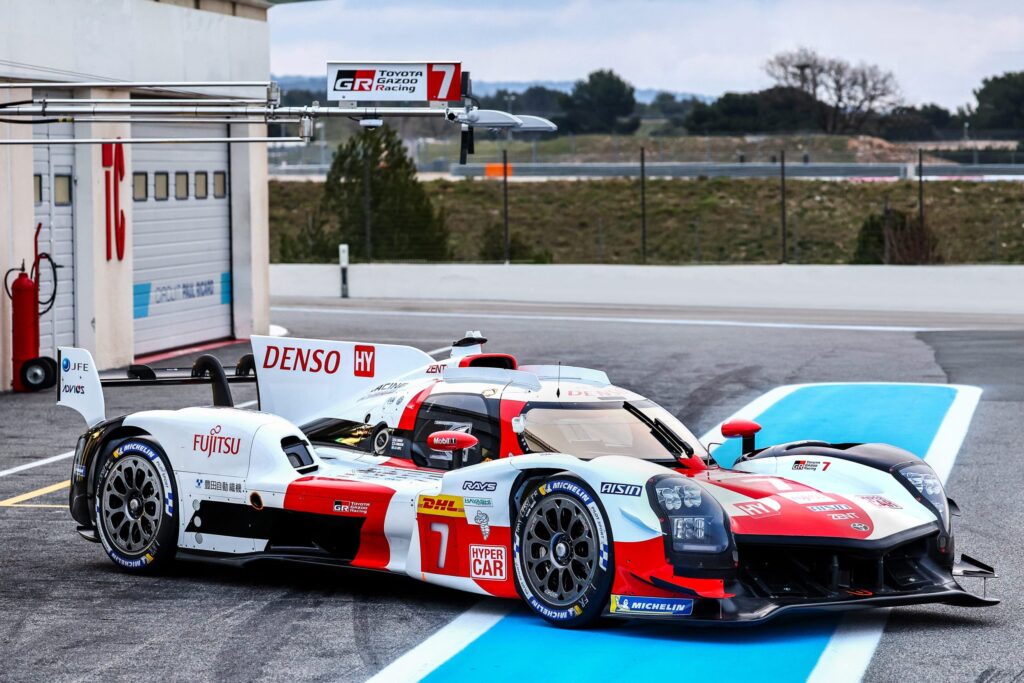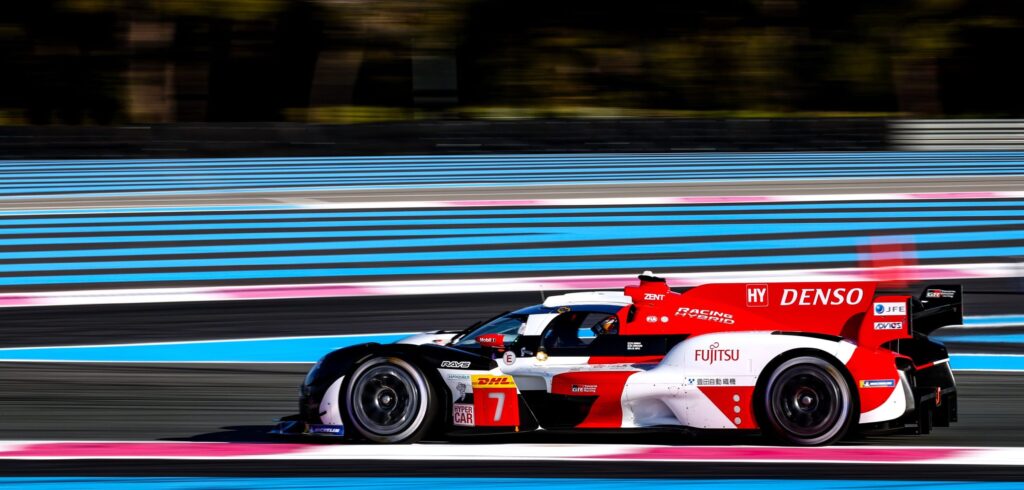Since being revealed in January 2021, the GR010 Hybrid Hypercar has undergone several evolutionary changes ahead of the 2023 FIA World Endurance Championship (WEC) to optimize reliability and efficiency. These include adjustments to the racing hybrid powertrain with its 697bhp 3.5-liter engine and an electric motor producing 268bhp. Changes were made to reduce the overall weight and to improve system reliability.
For 2023, major changes have also been made to the GR010 Hybrid’s bodywork, consisting of newly designed dive plane aerodynamic devices on the front corners and a smaller rear wing endplate to enhance driveability and aerodynamic consistency. Further modifications were made to the bodywork, such as new vents at the front and the rear to enhance brake cooling while also enabling quick-change cooling options during race events. A revised headlight layout has also been introduced to improve visibility at night.
Additionally, Toyota Gazoo Racing implemented a weight-saving program to bring the GR010 Hybrid’s overall mass down to the minimum 1,040kg permitted under the sporting regulations.
During events, the race car will use 100% renewable biofuel made from wine residues and agricultural material, resulting in a 65% reduction in CO2 emissions.
Several partners support the GR010 Hybrid with components and technical expertise, such as Denso which supplies radiators and spark plugs while also contributing to the front motor alongside Aisin. The vehicle’s lightweight magnesium alloy wheels are made and supplied by Rays, while Akebono provides mono-block alloy brake calipers and Mobil 1 delivers lubricant.
“At Toyota Gazoo Racing, we never stand still, and we are always pushing to make ever-better cars,” explained Kamui Kobayashi, team principal. “So, just like last year, we have introduced some evolutions to our GR010 Hybrid. These updates are the result of strong cooperation between team members in Higashi-Fuji and Cologne, as well as our partners and suppliers, so I would like to thank everyone for their hard work so far.”
“We have made evolutions to our car to further improve reliability, driveability and serviceability, part of our normal long-term plan for continuous improvement,” commented Pascal Vasselon, technical director. “We implemented a big evolution for 2022 with the change of wheel size, which was necessary to address some issues we were suffering from, and it delivered the benefits we expected. The modifications we have made for 2023 are the normal next step in this process, and we have seen encouraging results in pre-season testing.”




